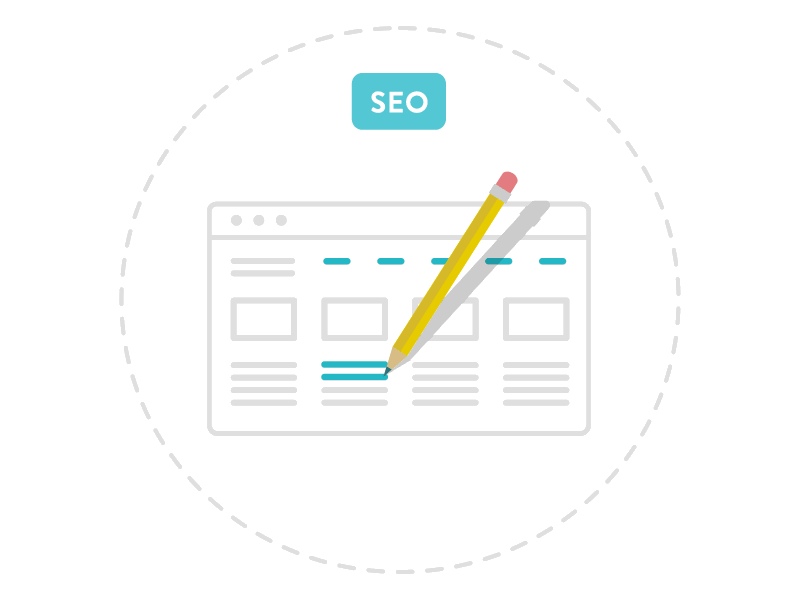At Yoast, we see a lot of websites on a daily basis. One thing we notice when looking at these websites is how poorly the website’s or page’s goal is communicated a lot of the time. A really good and fast way to convey your goal is by using headlines and taglines.
In this post, I’ll tell you how to use your headlines and taglines to your advantage by having them communicate a clear message that people will understand.
What are Headlines & Taglines?
Before jumping into this post, it might be useful to explain what headlines and taglines actually are. Wikipedia explains a headline in the following way:
The headline is the text indicating the nature of the article below it.
So the headline is basically a page’s or post’s title. And as Wikipedia so eloquently states it, that title should indicate what that page or post is about.
And Wikipedia explains the tagline as follows:
In entertainment, a tagline (or tagline) is a small amount of text which serves to clarify a thought for, or designed with a form of, dramatic effect.
I don’t completely agree with a tagline being for dramatic effect, but I do agree with the fact that a tagline serves to clarify a thought. Usually, it serves to clarify or specify the headline. A tagline is also something that’s not as mandatory as the headline. A page has to have a headline, but it doesn’t have to have a tagline. Especially not if the headline is clear enough in itself.
Why Use Headlines & Taglines?
As I mentioned above, headlines and taglines are a good and fast way to tell people what your website is about. And this matters, because people want to understand what your website is about, so they know if you have what they want. People don’t want to spend 30 minutes (or five, for that matter) searching your website to see if you do. They’ll just go to a website with a clearer message.
Additionally, having to think about a decent headlines and/or tagline for your website and its pages, actually forces you to think about your core business. What is it that you’re trying to convey? If a page’s headline is getting too complicated, it might be a good idea to think about making multiple pages for what you’re trying to do, for instance.
Don’t Assume People Know You
When you’ve figured out what your core business or purpose for a page is, it can actually be quite hard to write this down in such a way that it’s understandable for everyone. As Michiel said in his post on our blog about clarity and focus:
We want clarity. It’s the experience we get when visiting that website for the very first time: do we get the website? Is it clear what the benefits are for us visitors? And where or how can I get these benefits?
Don’t think that people will understand what you’re talking about, just because they’re on your site. Try to put yourself in the shoes of a person visiting your website for the first time. Is it clear what you’re offering by just reading the headline and/or tagline? For this post, the headline is “About headlines and taglines”. That’s simple, short and clear. People will know just by reading that headline what the post will be about.
Of course, for a single post, it’s much easier to write what it’s about than for an entire website or business. So you should take some time to formulating your core business and goals. If you think you found a decent headline, it might be a good idea to have someone outside of your business to check it out and let them tell you if they understand. And keep doing that until they understand.
Headlines That Work
There are quite a few ways you can make sure people will understand your headline and even fulfill the goal of your page. I’ll give you a few tips here:
Action Oriented Headlines
If possible, try to write your headlines in an action oriented way. You can do this by using verbs and sentences that imply an action for the visitor. For instance, we could have a headline saying: “Keep your site optimized with the WordPress SEO Premium plugin!”. This shows people one of the core values of the plugin, and making it active motivates people to actually try it.
Combine Your Headline with a Tagline
Combining your headline with a tagline will give people a very concise and clear explanation of your headline. Not all headlines need one per se, but usually the effect of having a tagline (or sub-headline, whatever you want to call it) is a positive one. The tagline is another chance to make sure people will be intrigued and to clarify for your visitors.
Have a Clear Headline
This is probably the hardest to do, because how do you know what is clear to people? This is something you should definitely test. But in any case, you need to make sure it’s as specific and concrete as possible. Again, it all comes down to clarity.
Be Clear!
By now you must get my main point: you have to be clear! If people can’t understand your website or what you’re selling/offering, they won’t stick around to figure it out. Especially when people are looking for something, they won’t do anything more than just scan the page they land on. So be sure what they’re scanning is as clear and concise as possible.
What do you think? Have you tried some nice headline variations that worked out really well for you? Or have anything else to mention? Let me know in the comments!

